#underpinning foundation
Text
Underpinning Footing – Everything You Need to Know in Complete Details
Underpinning Footing – Everything You Need to Know in Complete Details
HTML Source EditorWord wrap
Generally speaking, underpinning is a way to repair and strengthen out the building foundations. If you do a thorough research on the topic, then you would come across the wide array of options available in the market. However, you might get confused seeing the various options of underpinning footing in the foundations. Thus, consulting professionals, experts and…
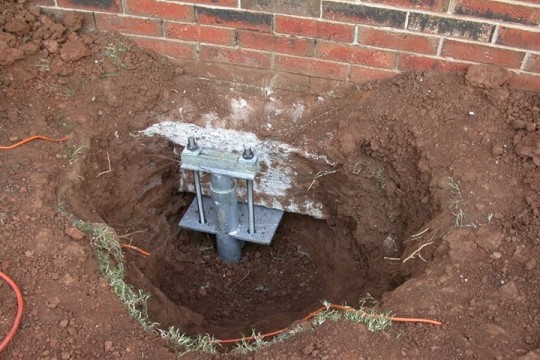
View On WordPress
0 notes
Text
What Are Underpinning Services?
The term “underpinning” refers to the process of strengthening and deepening the existing foundation of a building. It’s often necessary when the original foundation becomes damaged or unstable, or when a building is sinking into the ground. Underpinning is a complicated and extensive repair, so it should only be performed by an experienced professional.
There are several reasons a home might require underpinning services, including earthquakes, climate change, soil movement, heavy loads placed on the structure or adding an addition to the building. The process itself can be done in a variety of ways, depending on the type of underpinning required. Most often, a structural engineer will be consulted before any underpinning work can begin to ensure it’s safe and effective.
One of the most common reasons a house requires underpinning is because of differential settlement, which occurs when different parts of the foundation sink into the ground at different rates, putting excessive pressure on the structures. Underpinning can help to reduce this problem by redistributing the weight of the building across a larger area of land.
Differential settlement is a major cause of cracks in walls and floors, and underpinning can be used to repair these problems and restore the integrity of the home.
When underpinning is completed correctly, it’s possible to add up to 50 per cent more usable space to a basement or cellar. This is a great way to make an unfinished area more practical and suitable for a wide range of purposes, such as a state-of-the-art media room, a gym, a wine cellar, or a playroom for the kids.
In older homes, underpinning can also be an opportunity to upgrade old plumbing and electrical systems. By exposing these systems during the underpinning process, it’s easy to have them brought up to current standards and codes. This can reduce energy bills and lead to a more comfortable home.
Underpinning can also be an ideal time to improve the insulation of a home. By exposing the water supply pipes during underpinning, it’s possible to replace any outdated clay pipe with copper pipe that will last for a long time and allow for higher water pressure. This will result in better water pressure throughout the house, reducing shower and kitchen water consumption as well as lowering utility bills.
There are various methods for underpinning, but the most popular is to use helical piers. These are driven or bored into the ground using a hydraulic system. The piers are then loaded with concrete, which lifts and strengthens the foundation. This method is relatively quick and efficient, although it’s still important to use a skilled and experienced contractor. Alternatively, beam and base underpinning involves a reinforced concrete beam being built either above or below the existing footings. This redistributes the weight of the building onto multiple mass concrete bases, which can be reinforced with anti-heave measures to prevent future movements in the soil. Regardless of which underpinning method is chosen, all underpinning projects are completed in stages to avoid compromise of the foundation at any given point.
Precise Restumping & Underpinning successfully maintains a reputation for delivering quality, reliable and sound services to clients all over New South Wales, with a licensed builder that personally oversee all work.
#cost of underpinning foundations#cost of underpinning foundation#underpinning services#foundation maintenance and footing performance
0 notes
Text


Standard Underpinning Bracket
The foundations resting on unstable soil may shift and settle. To correct this problem, helical piers are screwed into stable soils and attached to the foundation with brackets. The underpinning brackets are utilized to support the weight of the structure. It is made from the highest quality steel, and is designed to last for years even under the most strenuous working conditions.
0 notes
Text

1 note
·
View note
Text
Magic of Underpinning Renovations
Step into the world of IcyReno, where we specialize in underpinning renovations that work wonders for your home. Our dedicated team puts in the hard work necessary to achieve incredible results and exceed our clients' expectations. With our expertise and attention to detail, we aim to leave you in awe of the transformation we can bring to your property. Let us create a truly remarkable space for you to enjoy. Underpinning is a crucial construction process that strengthens and stabilizes the foundation of a house. If you're considering underpinning your house in Toronto, understanding the associated costs is essential for effective planning and budgeting. Factors that influence the cost of underpinning include property size and complexity, the depth and number of underpinning piles required, access and site conditions, engineering and design requirements, and permitting and inspection costs. To obtain accurate cost estimates, consult our reputable underpinning contractors.
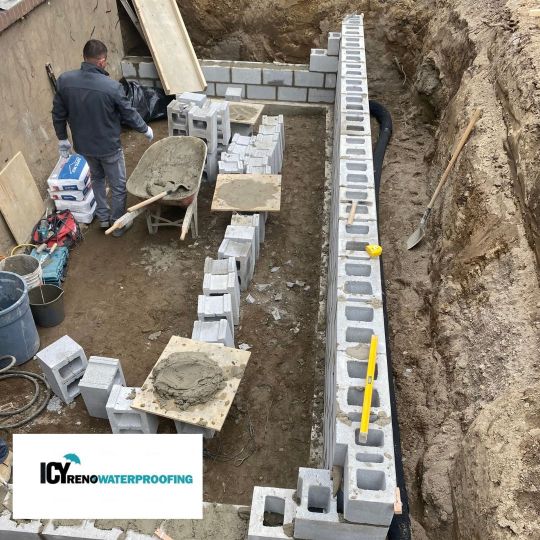
1 note
·
View note
Text
The Magic Trick You Didn’t See: Being An Analysis of Good Omens Season 2
(or: Neil Gaiman, Your Brain is Gorgeous
But I Have Cracked Your Sneaky Little Code
And Have You Dead To Rights*)
(*Maybe)
***
Soooooo I just spent the last 48 hours having a BREATHTAKING GALAXY BRAIN EPIPHANY about Good Omens Season 2 and feverishly writing a fuckin16,000 word essay about the incredible magic trick that @neil-gaiman pulled off.
Yes, it’s long, but I PROMISE your brains will explode. Do you want to know how magic works? Do you want to know what Metatron’s deal is (I’m like 99% sure of this and it’s EXTREMELY FUCKING GOOD)? Do you want to know about the Mystery of the Vanishing Eccles Cakes and the big fat beautiful clue I found in the opening credits? Do you go through the whole inventory of Chekov’s Firearm & Heavy Artillery Discount Warehouse?
Here is the essay, go read it: https://docs.google.com/document/d/193IXS11XN46lziHRb6eUpM17yK0BQkRqke1Wh64A_e0/ When ur done u can tell me I’m an insane crackpot, and u know what, i won’t even be offended
In case you don’t know whether you want to bother reading the whole enormous thing on google docs, I’ve put the first couple sections of it under the cut. JUST TRUST ME OKAY, HEAR ME OUT, THIS IS VERY EXTREMELY COOL, NEIL IS GOOD AT HIS JOB--
Proem
A dark theater. The rustling of the audience: clothes, breathing, whispers of anticipation. The lights come up. A man enters, stage left. He is a magician—a master magician—and he performs for you a magic trick so good and so subtle... that you don’t even notice you’ve seen it.
You know there must have been a trick—after all, you came to the theater to see a trick performed, didn’t you? And he claims to be a magician. So there had to be a trick somewhere. There had to be.
But maybe there wasn’t. Maybe there was just a man on a stage, talking to you, telling you a story with a strangely unsatisfying ending you didn’t quite understand.
I know. This is a weird beginning to an analysis essay. But hear me out, because I have to explain the mechanisms of the stage before I can show you what the trick was, where the trapdoor was hidden, and how Neil Gaiman pulled the whole thing off so gently and elegantly that you didn’t notice a thing. Ready? Here we go.
The Facts As We Know Them
Let us begin by establishing a baseline—some fundamental, logical assumptions that underpin the magic trick. These will seem obvious as soon as I say them, which is precisely the point: They are self-evident, loadbearing foundations for my entire argument, and if I don’t point them out, I’m going to sound like a crackpot conspiracy theorist. (Which! To be fair, I might be. I could easily be wrong about all this—but I don’t think I am.)
Our baseline, loadbearing assumptions that preface my Grand Unified Theory of Season 2:
1. Neil Gaiman is extremely good at his job.
2. Neil Gaiman loves these characters and wants with all his heart to do them justice; likewise, he has a great deal of respect, love, and admiration for Terry Pratchett and is striving VERY HARD to write the show the way Terry would have been happy with.
3. The devil, as they say, is in the details: Neil Gaiman and the entire Good Omens cast/crew are fully capable of doing extremely subtle detail work, as conclusively proven in Season 1 Ep 6, specifically the whole sequence of the body-swap scenes.
With me so far? Great.
The Elephant In The Room
Season 2 was... odd. It was odd, wasn’t it. This isn’t a matter of whether you loved it or hated it—there was just something odd going on.
I spent the entirety of my first viewing very much enjoying myself and being very happy to be back with these characters and this world, but I was also liveblogging to my groupchat as I went, and a theme soon began emerging:
“Neil, what are you doing? Where are you going with this?”
“What in god’s name is going on here? I’m so lost lmao.”
“What is going on with the music situation?”
“WHAT ARE YOU DOING HERE NEIL”
“zombies, ok, I trust u to pull this all together in the end, Neil, but I still don't know what you're up to”
“What is going on LOL”
“Incredibly what is going on here”
“NEIL! WHAT IS HAPPENING!”
“Literally what is happening”
“Neil Gaiman why have you constructed a regency au for mystery VIBES reasons”
“just????????? lesbians????????? dancing what's HAPPENING. just all the background characters are gay here ok sure sure sure NEIL GAIMAN WHAT IS HAPPENING--”
“mmmmmmm neil what u doin”
All these are copied verbatim from my liveblogging, and apparently I am not the only one to have this reaction. And to be clear, I was having a good time! I came out to this theater to see a magic trick, and this Neil Gaiman guy on stage is a master magician—but I didn’t see the trick, even though there must have been a trick.
At first, I wasn’t sure how I felt about the season. I wanted to like it! Indeed, there were many things that I liked about it! But I felt a bit muddled and jumbled up and confused—I felt like there was something I didn’t understand about it, and so I couldn’t yet understand how I felt about it either.
I started chewing on this question in a friend’s DMs: Why is season 2 so fucking odd? What is going on here, Neil? What are you up to? The matter of whether he was up to something was never in question. I knew that he had to be up to something. Writers are always up to something, and as I watched season 2, it was as if I was watching Neil scamper around the room with a mischievous expression as he messed with things here and there and made little tweaks and adjustments to the arrangement of all the Chekov’s guns he’s stockpiling on the mantelpiece.
You see, Season 2 has some very bad writing in it. HANG ON, DON’T ARGUE WITH ME YET! THIS IS NOT A JUDGMENT CALL!! This is the rug that the trick’s secret mechanism is hidden under!!! This is the hidden mirror that makes the trick work!!!!! This is the trapdoor in the stage!
Yes, of course I will explain myself.
Neil Gaiman is a master magician, but I am a pretty damn good magician myself—I’m a professional fantasy author who has published nine books, and I teach workshops for apprentice writers online and at universities—and if there is one thing I have learned about the process of achieving mastery of your craft, it is this:
Regardless of what medium they’re working in, the apprentice artist is concerned primarily with achieving realism via an expansion of their control—control of their brush strokes as they paint a photorealistic eye; control of their deck of cards, the mechanisms of their magic tricks, and where the audience’s attention is being directed; control of all the little factors of voice, plot, character, setting, suspense and surprise that go into writing a good story. However, the master artist has achieved that control—so much so that it often looks effortless to an untrained eye—and sometimes the master artist returns to a messy, amateurish style simply because they have control even over this too.
As an example, consider Picasso and his entire body of work. He begins as an apprentice focused on achieving control, doing portraits of people that look like people—like what we expect a portrait of a person to look like. Then, as he grows in skill and gradually achieves mastery, he pulls away from realism. He develops a style, he experiments with faces that don’t look like any human alive colored in ways that do not appear in nature. He expands his control. His work becomes abstract. Towards the end of his life, he starts experimenting with what’s called “Naive art”, something that a 5 year old could theoretically draw... but you have to achieve mastery before you can do it on purpose and have it look good.
On one hand, Neil Gaiman is extremely good at his job. On the other hand, Season 2 has bad writing in it.
What does that tell us?
Well, we know from our Baseline Assumptions that Neil Gaiman is simply too good of a writer to fuck up through garden-variety clumsiness and lack-of-control the way an apprentice writer would. Additionally, he cannot fuck up by accident in this case because I am positive that the man is scrutinizing his work on Good Omens far too closely to let anything slide—for Crowley and Aziraphale’s sakes, for David and Michael’s sakes, and especially for Terry’s sake. The stakes are sky-high, and he cares too much to write a weird, kind of “bad” season by accident.
Which leaves only one option: He did it on purpose.

(Am I sounding like a crackpot conspiracy theorist? Baby, you ain’t seen nothin’ yet. I’m gonna get SO MUCH MORE CRACKPOT.)
If he did it on purpose, then the natural question to ask is: WHY!?!?!??
It’s a great question. Not “Why?” in terms of why he as an individual person with emotions would decide to do that, mind you. More like, “What purpose does this serve for the structure of the narrative?” There is a story he is intending to tell, and out of all the choices he could have possibly made, for some reason this one was necessary and correct in order to achieve that end goal—so what was that reason?

See? Intentionality. He knows exactly what details he left in, and he did it on purpose. (Editing! It’s important!)
So there has to be a reason. It’s like when a master magician “casually” rubs an itch on his nose—why did he do that? What is he sneakily slipping into his mouth by hiding it under the excuse of this little gesture that does not even register to you as meaningful? (If you haven’t watched enough stage magic to know what I mean, watch this.)
This question is, of course, impossible to simply answer out of thin air without any further evidence. It is a dead end—so we must adjust the question and come at it from a different angle.
The one I settled on when I was chewing on this was: Well, okay, what do I mean when I say “bad writing”? What is it about S2 that makes it feel so goddamn odd?
The Pledge, The Turn, and... The Conspicuous, Expectant Silence
There are three parts to a magic trick: Pledge, Turn, Prestige.
First, the Pledge: You show the audience something ordinary.
Second, the Turn: You make that ordinary thing do something extraordinary, like vanish.
Third, the Prestige: You bring the ordinary thing back.
To quote the 2006 film The Prestige just after its explanation of the first two parts: “You want to be fooled. But you wouldn’t clap yet, because making something disappear isn’t enough. You have to bring it back.”
You have to bring it back.
When I teach apprentice writers, I call this a “setup-payoff cycle”. Achieving control and dexterity with this tool is crucial, because the setup-payoff cycle is the engine of the story—it’s what makes the story run. You can have a setup-payoff cycle at any scale—I have read ones that were a single sentence long; I’ve read ones that were two books long. Additionally, all jokes, no matter how long they are, are structured on a setup/payoff cycle. These cycles work precisely the same way a magic trick does:
You set up the audience’s expectations.
(Optional but generally considered stylish and elegant: You give those expectations a firm jolt to throw the audience off-balance.)
You pay off the audience’s expectations in a way they weren’t expecting, while saying “TA DA!!!!” really loud with your arms flung wide.
Audiences really like this. A setup-payoff cycle executed just right makes the audience’s brains light up like Times Square and hammers on their mental “reward” buttons like nothing else. It’s like you’ve personally handed them a cookie and a gold star. They go wild for this.
Here’s an example of a setup-payoff cycle, though it’s not a perfect one—and you’ve probably heard it before, so you’re not going to be throwing chairs and tearing down the theater from sheer glee:
The Setup: Knock knock. Who’s there? Banana. Banana who?
The Jolt: (the joke starts over and repeats several times without reaching the payoff (aka the prestige) while the audience grows more and more annoyed and frustrated about the unfulfilled expectations, until finally...) Knock knock. Who’s there? Orange. Orange who?
The Payoff: ORANGE YOU GLAD I DIDN’T SAY BANANA?
Good Omens Season 2 feels so fucking odd because the setup-payoff cycles are incomplete—nearly all of them are, and the ones that do close the loop do so in really weird ways which, as a professional author, make me feel kind of, “Bwuh?????? But where’s my cookie? Excuse me??? Sir???? Neil????? My cookie, tho???”
When I realized this, when I finally put my finger on why the whole season was giving me some uncanny valley heebie-jeebies, a chill ran down my spine.
(The rest is here: https://docs.google.com/document/d/193IXS11XN46lziHRb6eUpM17yK0BQkRqke1Wh64A_e0/ I’M GOING TO GO STARE INTO THE ABYSS NOW BYE)
11K notes
·
View notes
Text
Foundation Underpinning: A Comprehensive Guide To Strengthening And Repairing Existing Structures
Foundation underpinning is a crucial process in the construction industry, aimed at strengthening and repairing existing structures. It involves reinforcing the foundation of a building to ensure stability and prevent structural damage. In this comprehensive guide, we will delve into the details of foundation underpinning, exploring its importance, methods, and considerations.
1 note
·
View note
Photo
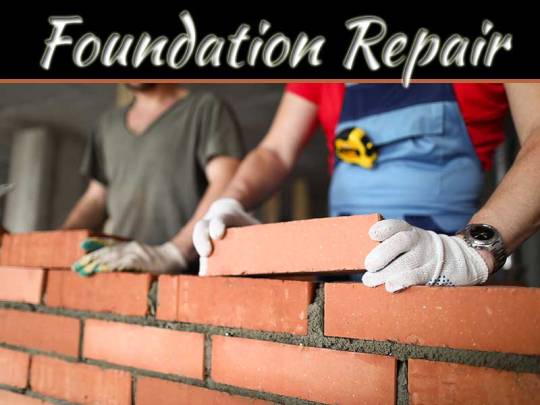
Foundation Repair Terminologies Everyone Should Know
If you're in the market for foundation repair, you must understand some of the most common terminology used in the industry. In this blog post, we will discuss some of the most common foundation repair terms.
#foundation#repair#terminologies#underpinning#shimming#piering#foundation repair#repairterminologies#houselevelling
1 note
·
View note
Text
youtube
Moving into a house that needs restumping and renovation
Do you have an old house that needs restumping? Are you new to the area and unsure if your home needs to be renovated? Watch this video and learn why you need a professional to do this work, what they'll do, and how much they'll work.
#House Restumping#underpinning#houselevelling#underpinning service#foundationrepair#House reblocking#Home Leveling#foundation leveling#underpinning experts#Youtube
1 note
·
View note
Text
Concrete lifting: a more efficient process
Concrete lifting is a process that many people don't think about, but it's an important part of construction. It makes sense, if you're going to build something stronger and higher than what you currently have, then you need to lift what you're building off of and replace it with something else. In this article, you'll explore how concrete lifting in Irvine can improve your business in other areas including safety, cost-efficiency, the workforce, and the environment.
What is concrete lifting?
Concrete lifting is a process used in construction and other industries to raise the level of concrete. This process is also referred to as concrete raising or concrete jacking. Concrete lifting involves using a hydraulic jack to lift the slab on one side and then placing wedge supports underneath it, ensuring that it does not fall back down once you have lifted it.
Benefits of concrete lifting
Concrete lifting is an excellent way to fix any issues with your concrete floors. It can also be used to help make your home more energy efficient, which means that you will save money on heating and cooling costs each month.
Improved durability
Concrete lifting allows you to improve the lifespan of your concrete surface by replacing damaged portions of it. This can increase the life span of your floors, driveways, and patios by many years.
Increased aesthetic appeal
Concrete lifting allows you to fix cracks, uneven surfaces, and other problems that detract from the appearance of your property. You can also add new colors and textures to your flooring using concrete lifting techniques. The result is a more attractive space that will be more appealing to potential buyers or renters.
Fixing foundation problems
If your house has sunken floors or walls, it could be because your foundation has shifted over time due to shifting soil conditions or other factors. Concrete lifting can fix this problem by raising the foundation and restoring its stability.
Improving curb appeal
Concrete lifting can change the look of your home significantly if you want to add some visual interest with a sunken patio or walkway by lowering your yard in front of your house. You can also raise your driveway to create extra parking spaces without having to worry about drainage issues during rainy weather.
Restoring Structural Integrity
Lifts concrete slabs back up off their foundations so they're able to support their weight again without assistance from underneath them.
Flattening Uneven Surfaces
Concrete lifting can help you level out an uneven surface on your property. This technique works well on driveways, patios, and sidewalks that have uneven surfaces due to settling or shifting over time. It will even out these types of problems so they don't look like they've been repaired at all
Increased property value��
Once your home has been lifted, you can sell it for more money than you could have previously due to its increased attractiveness.
The concrete lifting process is an extremely useful technique in many residential construction projects. It provides an economical way to lift the structure and avoid the costly demolition of the existing foundation. By transferring the weight of the house onto a more sound foundation, you can preserve the structure for future renovations. Plus, concrete lifting in Irvine saves time and money during the construction process, since levels are not being built underneath and are later removed to construct a traditional foundation.
Dalinghaus Construction Inc
9891 Irvine Center Drive, Irvine, California, 92618
Phone: (714) 475-7581
#foundation repair near me#concrete leveling near me#underpinning near me#home foundation repair near me#foundation repair companies#Underpinning irvine#foundation repair irvine#Concrete Lifting irvine
0 notes
Photo
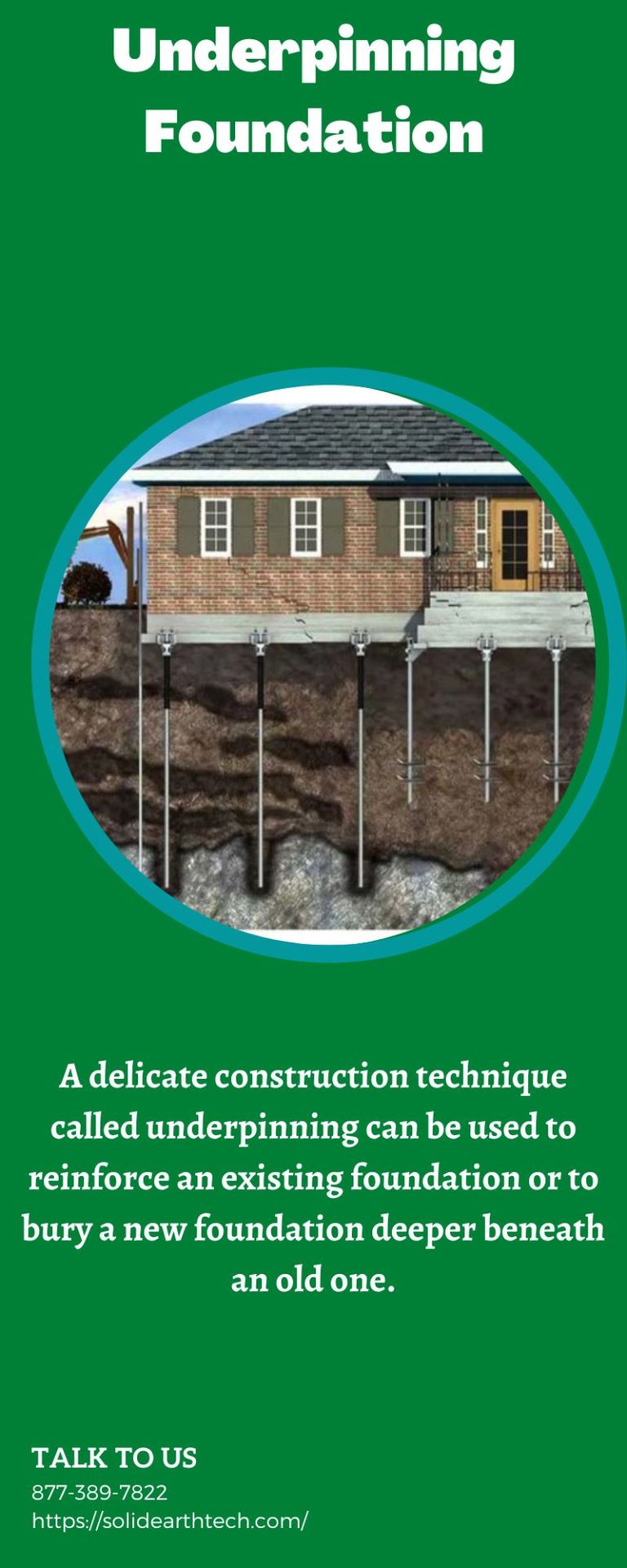
Do you seek a "underpinning Foundation"? You are at right place with solid earth technologies, solid earth technologies does underpinning foundation across the US.
Because of our expertise in environmentally friendly development, we are able to construct where other businesses cannot. Visit https://solidearthtech.com/helical-pier-installers/underpinning-structures/
0 notes
Text
Underpinning Services
A weak house foundation can lead to cracks in walls and floors, leaks in pipes, and bouncy surfaces. It is important to underpin your home to save it from further damage and to avoid costly repair work in the future. Underpinning is a common service that can be offered by local building contractors in Melbourne.
There are several ways to underpin a house in Melbourne, however, the most popular is mass concrete underpinning. This involves digging holes underneath the existing foundation and then pouring concrete into the hole. The concrete cures and prevents any further movement of the foundation.
Other methods of underpinning services Melbourne include piles and steel helical underpinning. Pile underpinning is similar to underpinning but uses a series of steel cylinders that are driven into the ground. This method of underpinning is ideal for pier and beam type foundations as it adds additional support to the structure. It is also suitable for masonry structures such as brick walls and chimneys.
Helical underpinning is another option that uses steel cables to create a circular pile of concrete. This pile is then attached to the foundation using brackets. This is a relatively inexpensive way to underpin a property, especially if it is only required for a small area.
Besides underpinning, the company also offers other services such as reblocking and restumping Melbourne. These services are essential to maintain the structural integrity of your home, and they can help with damp issues such as mould and mildew growth. A quality service will take a diagnostic approach to determine the best solution for your foundation.
One of the most common problems that homeowners face is subsidence. Subsidence is a gradual sinking of the foundation of your home. It can be caused by a number of factors, such as changes in the soil composition or an earthquake. It can also be a result of tree roots as they remove water from the soil.
If left untreated, your foundations can get worse, and this will lead to a lot of expensive repairs and replacements for your home. It is important to contact a professional as soon as you notice any signs of subsidence in your Melbourne home.
There are a variety of different types of underpinning available for your Melbourne home, so it is important to choose the right method for your needs. Some options are more cost-effective than others, and the right method will ensure that your home is safe and secure. You can trust the professionals at Fort Knox Foundations to provide you with a reliable and affordable underpinning service. Contact us today to learn more about how we can help you.
Precise Restumping & Underpinning successfully maintains a reputation for delivering quality, reliable and sound services to clients all over New South Wales, with a licensed builder that personally oversee all work.
#foundation maintenance and footing performance#underpinning services melbourne#underpinning repairs#how much does restumping cost
0 notes
Text
Here are the creations made by women that men never mention and completely forget: Rosalind Franklin's critical work on the structure of DNA, which was pivotal yet overshadowed by her male counterparts; Ada Lovelace's development of the first computer algorithm, a foundational achievement in computing history; and Hedy Lamarr's invention of frequency-hopping spread spectrum technology, which underpins modern wireless communication. In literature, Mary Shelley's "Frankenstein," a seminal work in the science fiction genre, is often wrongly attributed to her husband. Similarly, the Brontë sisters, writing under male pseudonyms, produced some of the most enduring works in English literature. Fanny Mendelssohn and Clara Schumann, both accomplished composers, had their musical contributions minimized or attributed to their male relatives. These examples show the systematic erasure of women's contributions and creations, taking away the very rich history of female innovation and creativity, which deserve recognition. This is why we should not allow men to undermine women's work, especially given the fact that patriarchy literally stripped away women's rights. Regardless, women continued being innovative.
#radical feminist safe#radblr#men are the problem#women have created a lot throughout history and we should not allow men to deny that#radical feminism#feminism#terfblr
445 notes
·
View notes
Text
Worldbuilding: Questions to Consider
Government & authority:
Types of government: What type of government exists (monarchy, democracy, theocracy, etc.)? Is it centralised or decentralised?
Leadership: Who holds power and how is it acquired (inheritance, election, divine right, conquest)?
Law enforcement: Who enforces the laws (military, police, magical entities)?
Legal system: How are laws made, interpreted, and enforced? Are there courts, judges, or councils?
Laws:
Criminal laws: What constitutes a crime? What are the punishments?
Civil laws: How are disputes between individuals resolved?
Cultural norms: How do customs and traditions influence the laws?
Magic/supernatural: Are there laws governing the use of magic or interaction with supernatural beings?
Social structure:
Class/status: How is society divided (nobility, commoners, slaves)? Are there caste systems or social mobility?
Rights & freedoms: What rights do individuals have (speech, religion, property)?
Discrimination: Are there laws that protect or discriminate against certain groups (race, gender, species, culture)?
Economy & trade:
Currency: What is used as currency? Is it standardised?
Trade laws: Are there regulations on trade, tariffs, or embargoes?
Property laws: How is ownership determined and transferred? Are there inheritance laws?
Religion/belief systems:
Religious authority: What role does religion play in governance? Are religious leaders also political leaders?
Freedom of religion: Are citizens free to practice different religions? If not, which are taboo?
Holy laws: Are there laws based on religious texts or teachings?
Military & defense:
Standing army: Is there a professional military or a militia? Who serves, and how are they recruited?
War & peace: What are the laws regarding war, peace treaties, and diplomacy?
Weapons: Are there restrictions or laws regarding weapons for civilians? What is used as a weapon? Who has access to them?
Technology & magic:
Technological advancements: How advanced is the technology (medieval, steampunk, futuristic, etc.)?
Magical laws: Are there regulations on the use of magic, magical creatures, or artifacts?
Innovation & research: How are inventors and researchers treated? Are there laws protecting intellectual property?
Environmental/resource management:
Natural resources: How are resources like water, minerals, and forests managed and protected, if at all?
Environmental laws: Are there protections for the environment? How are they enforced? Are there consequences for violations?
Cultural & ethical considerations:
Cultural diversity: How does the law accommodate or suppress cultural diversity?
Ethics: What are the ethical foundations of the laws? Are there philosophical or moral principles that underpin them?
Traditions vs. change: Does the society balance tradition with progress? How?
Happy writing ❤
Previous | Next
#writeblr#writing#writing tips#writing help#writing resources#creative writing#worldbuilding#fantasy worldbuilding#fantasy writing#fantasy world#deception-united
336 notes
·
View notes
Text
Foundation Repair - How Does It Affect The Sale Value Of A House
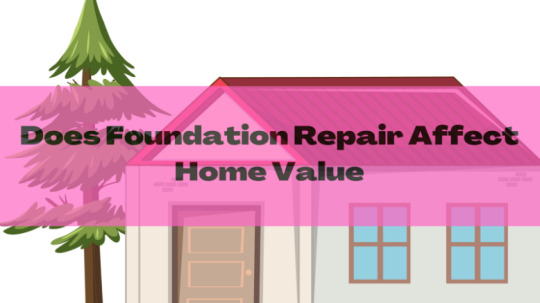
When we look for a new home that we want to buy, of course the best scenario is that there are no problems that we encounter during a house prospecting or visit. What are the usual house damages that we should consider that basically lessens the value of the property?
Let us consider the location first, if the house has a pool or possibly is near a water area that can penetrate the house or if the house already has water inside then this affects the value of the house.
Second is house near a tree, you need to possible track where the roots are coming out or where it is located, if you are asking why, because huge trees has already a strong roots that covering this with cement will simply not help, it will just penetrate through it, if you want to have the tree to remain, then you need to consider where the roots path are.
Third is structural damages of the house, likely due to old age where the house materials are already showing its signs of weakness.
All the signs of structural damages can diminish the selling value of a house and what does a home seller supposed to do? If nothing then they can anticipate that the buyer will automatically offer a lesser value of what the home seller thinks should be the value which likely if needed to sell will lead to accepting a negotiated value.
Or the home seller needs to first fix the problem and might end up getting more value from what is the estimated value of the property. Now how can this be fixed?
With this identified and likely having more issues that may show up, a fix can be done through foundation repair? This is one type of structural repair services that are being provided by building restoration companies that basically are having structural damages mainly the house or building foundations.
To make sure that the building restoration company that you will hire is legit, make sure that you verify that the company has property accreditations, reputable and insured.
#Structural Rectification Specialists#Structural Repair Specialists#Underpinning Melbourne#Chemical Underpinners#buildingrestorationservicesmelbourne#buildingrestorationservices#concreterectification#concretemasonry#concreteandmasonryservices#structuralrepairservices#houselevellingmelbourne#foundation repair melbourne
0 notes